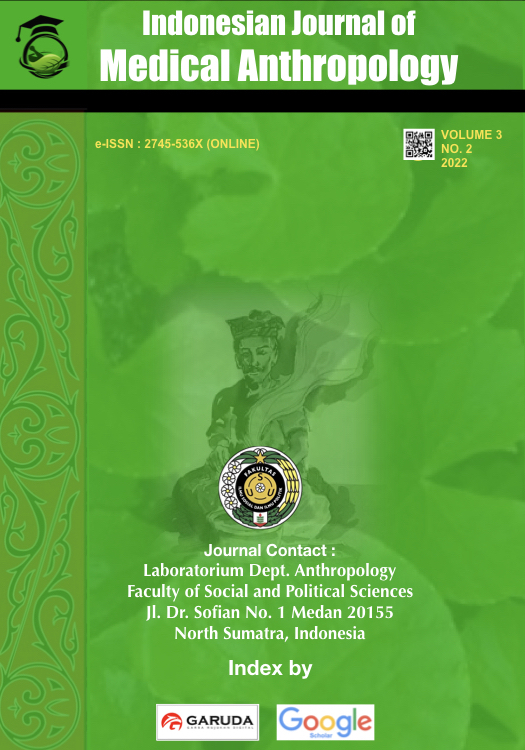Knowledge Construction on Traditional Massage Healer in Sipirok, Tapanuli Selatan District
DOI:
https://doi.org/10.32734/ijma.v4i1.10792Keywords:
Knowledge Construction, Message Healer, Sipirok, Tapanuli SelatanAbstract
This paper examines the health culture system of a community with a focus on the knowledge construction process in traditional medicinal practices called massage healers. The villagers still choose traditional practices as the main or alternative treatment in dealing with their illness with various explanations. This explanation is also related to the side effects of chemicals and the relatively high cost of modern medical treatment. The primary methods for collecting data for this study were qualitative, including participant observation, in-depth interviews with key informants, and four months of fieldwork. A holistic analysis is carried out on all field data to unravel the knowledge construction on the research subject. The findings of this study showed that the knowledge construction process within traditional massage healers persists throughout their clinical experience and is related to cosmology, and accumulates over time and from one patient to the next. The method of acquiring knowledge also varies; through stories from other people in the village or pharmacists, experiences in treating patients, dreams, and whispers from ancestors, villagers, relatives, and other healers. Experience and information from all sources of knowledge provide feedback on the enrichment of existing knowledge, techniques, and better healing strategies for patients.
Downloads
Downloads
Published
How to Cite
Issue
Section
License
Copyright (c) 2023 Indonesian Journal of Medical Anthropology

This work is licensed under a Creative Commons Attribution-ShareAlike 4.0 International License.











